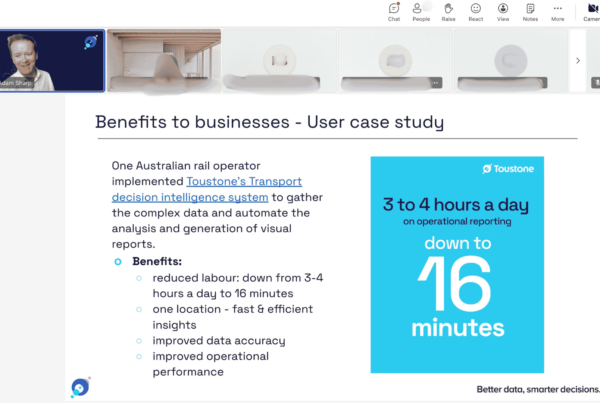It is too risky for a business to become complacent about employee turnover, even when job mobility is said to be decreasing. It’s important to understand that not long ago—just a few months back—employee turnover was still high and had been high for many years.
For example, the average employee turnover in Australian workplaces for the 12 months to the end of March 2024 was 15%. Almost a third (32%) of organisations reported that the annual average employee turnover for 12 months was 20% and above.
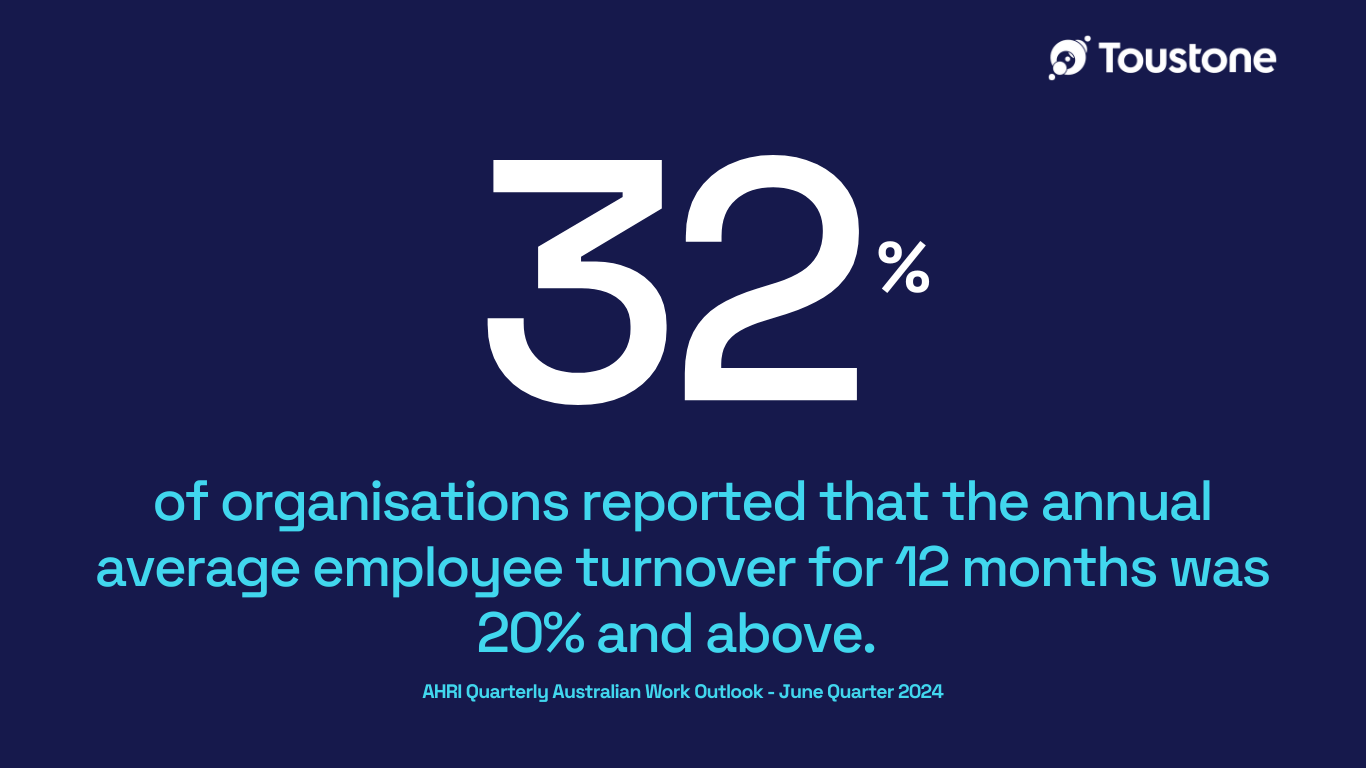
And sure, there may be less job mobility right now due to fewer opportunities and uncertain macroeconomic conditions, but rest assured, the intention of leaving is still there, and as soon as the job market changes, those very same employees will seek a new opportunity.
Unless you act. And act now.
We argue that this slight slowdown in the job market allows Australian leaders to jump off our hamster wheel of constant recruitment to offset departures and understand the why.
The Why
Understanding why employees leave and taking proactive measures to retain them is crucial. With the public sector seeing a higher turnover rate (23%) compared to the private sector (13%), it is understandable why the Australian Government’s 2022-23 Budget commitment to achieve savings of $3.6 billion over four years includes a focus on rebalancing the workforce and retaining talent.
Having a solution that allows organisations to gain valuable insights into employee behaviour and performance to help them identify patterns and drivers of turnover can be instrumental to their success.
This is where predictive people analytics is emerging as a critical tool in the fight against employee turnover.
But before we dive into predictive people analytics, let’s look at how staff churn is affecting other industries such as transport and agriculture.
Retention Challenges Across the Transport and Agriculture Sectors
With a $155 billion pipeline of transport and infrastructure projects planned in Australia over the next 15 years and an ageing workforce, the rail industry is experiencing critical skills shortages. So, increasing the number of younger workers and retaining top talent remains a key focus for industry bodies like the Australasian Railway Association (ARA), particularly with voluntary staff turnover having risen to an average of more than 15%. Not to mention that five years after graduating, men with a STEM qualification are almost twice as likely (1.8 times) to still work in a STEM job compared to their female peers.
We see a similar challenge in the agricultural sector, Australian Meat Processor Corporation has highlighted that retaining experienced employees is crucial for the Australian red meat processing sector, which contributes approximately 100,000 direct and indirect jobs.
In an interview with Meat & Livestock Australia, South Australian producer and workplace consultant Danielle Lannin England highlights the meat industry’s reliance on a migrant and backpacker workforce, which has faced significant disruptions since COVID-19.
A lack of skilled workers means employers need to invest in staff training, making retention efforts even more vital.
Danielle argues that retaining staff is cheaper than rehiring, stating:
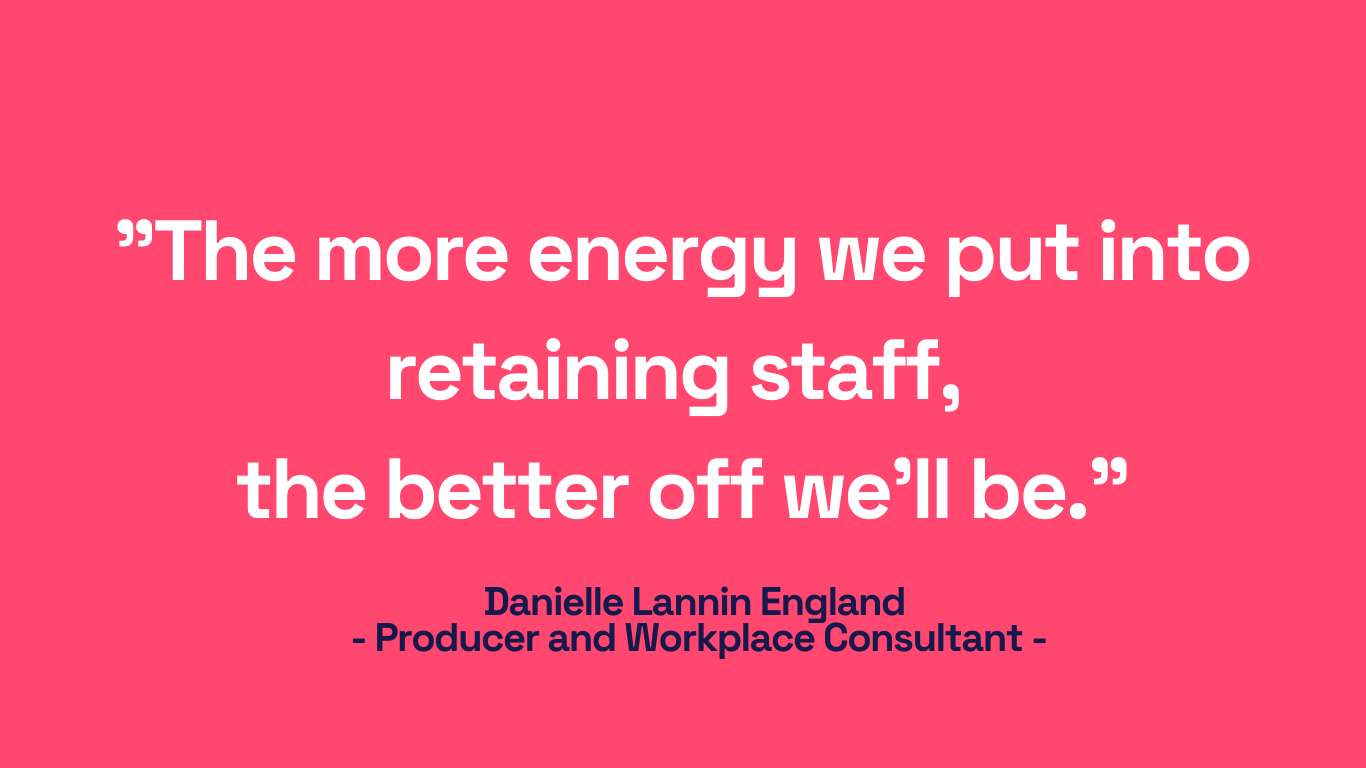
Staff churn impacts an organisation’s bottom line, costing millions annually
The average cost to replace an employee is about 33% of their base salary… and let’s not forget the time, HR resources and additional strain on productivity to fill the talent gap.
This year’s ELMO 2024 report found the cost of hiring is now at an average of $20,000 per hire with a time to fill of 18 days in Australia, but let’s not leave out that around 13% of all new hires leave before their probationary period has ended. So, more time and money is out the door.
To understand what this means in terms of the overall costs to an organisation, our CEO Craig Lefoe explains it well in this short video:
In the example shared by Craig, an Australian organisation with 770 employees, a 30% staff turnover rate, and an average recruitment cost of $25,000 (for a $60,000 salary position) could be facing over $5 million in annual staff turnover costs. You can use this Australian Government Calculator to calculate the real cost to your company.
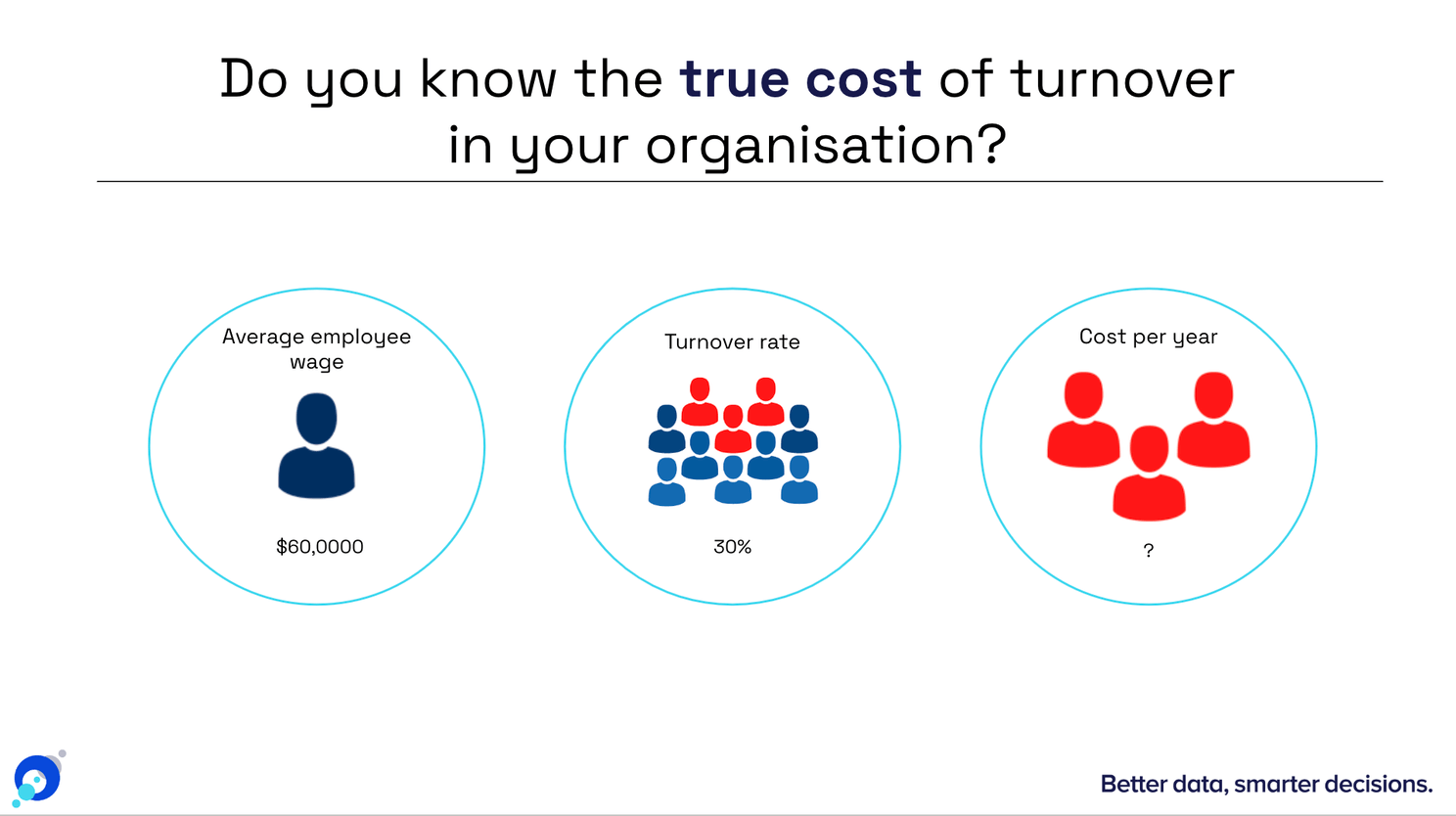
It has been proven that investing in retaining talented staff through upskilling can help reduce costs and create an adaptable workforce. In fact, companies with the highest rates of employee engagement are 21% more profitable than their peers.
Toustone COO Matt Pedersen explains that upskilling employees can increase retention and reduce voluntary staff turnover.
“Employees who have the opportunity to upskill themselves to advance their careers, provide benefits to both themselves and their businesses.”
“It has been shown that upskilling talent is critical in the path to retain talent and to avoid the associated cost of turnover. Not only this, it also creates employee resilience, which leads to higher innovation.”
“So retaining talent is cheaper, but understanding the reason an employee leaves is not always so black and white. This is where the power of data and predictive people analytics come into play.”
Predictive people analytics can save organisations money
Given these challenges, predictive people analytics can allow organisations to leverage data to their advantage, working proactively to address potential retention issues.
This innovative approach uses data and machine learning models to anticipate workforce trends, identifying employees likely to leave and the reasons behind their decisions. By taking proactive measures based on these insights, companies can significantly enhance their retention strategies.
Vanessa Porter, Managing Director and People & Culture Strategist at All of You, notes that predictive analytics helps anticipate and mitigate workforce risks:
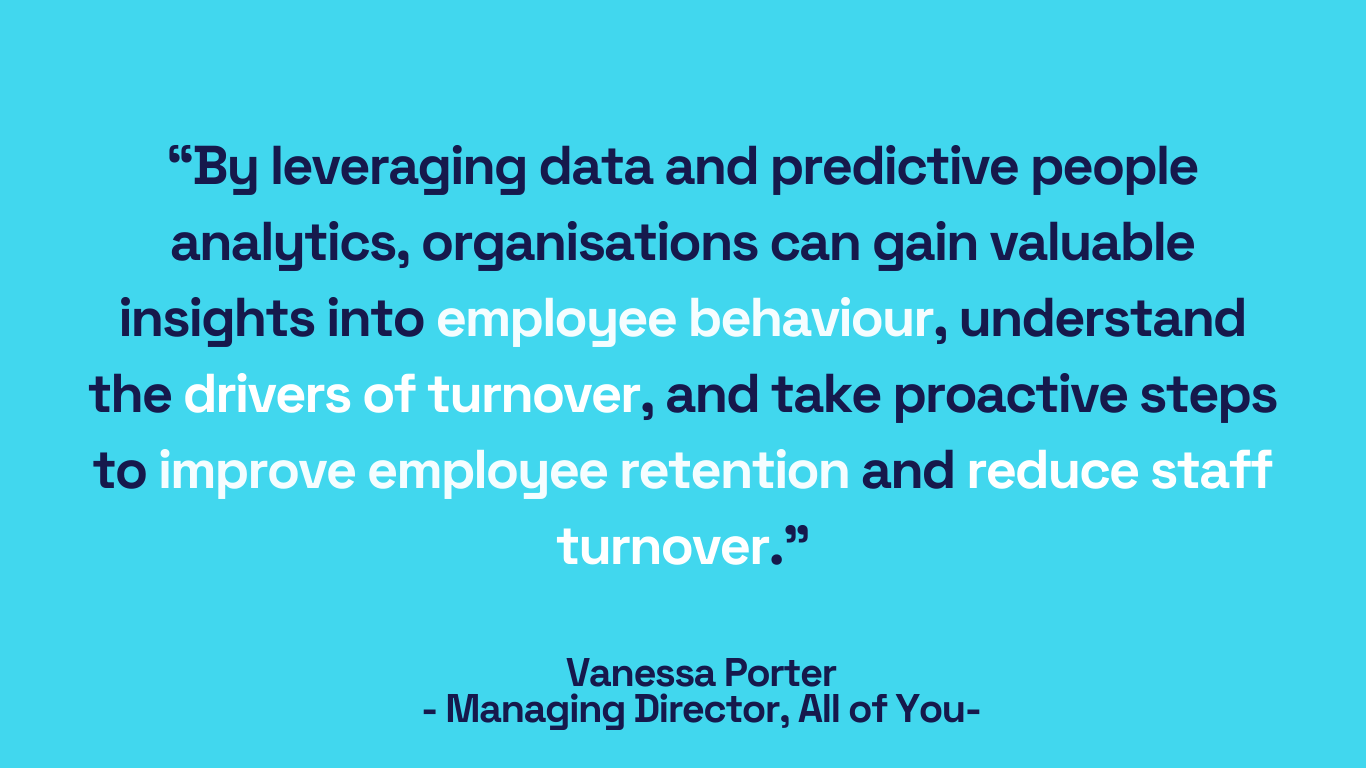
“Knowing who is likely to leave, and better still, the likely reasons why, then you can act. As Australian HR leaders and businesses put in measures to address these reasons, no doubt, the likelihood of losing that staff member will decrease,” Vanessa said.
An AMPC research program has found that machine learning can predict which employees are at risk of absenteeism or departure, enabling processors to actively manage their staff and retain them longer.
And Craig couldn’t agree more.
“AI can help solve some major problems many businesses face. And the most common HR problem I hear about is employee retention.”
“So it’s a matter of leveraging data to your advantage, working with the data, and using it for the better,” Craig said.
“Using predictive people analytics, one meat processing plant experiencing high turnover during staff shortages was able to identify 87% of staff who were planning on leaving in the next 12 months, including the reasons why, at a 96% accuracy rate.”
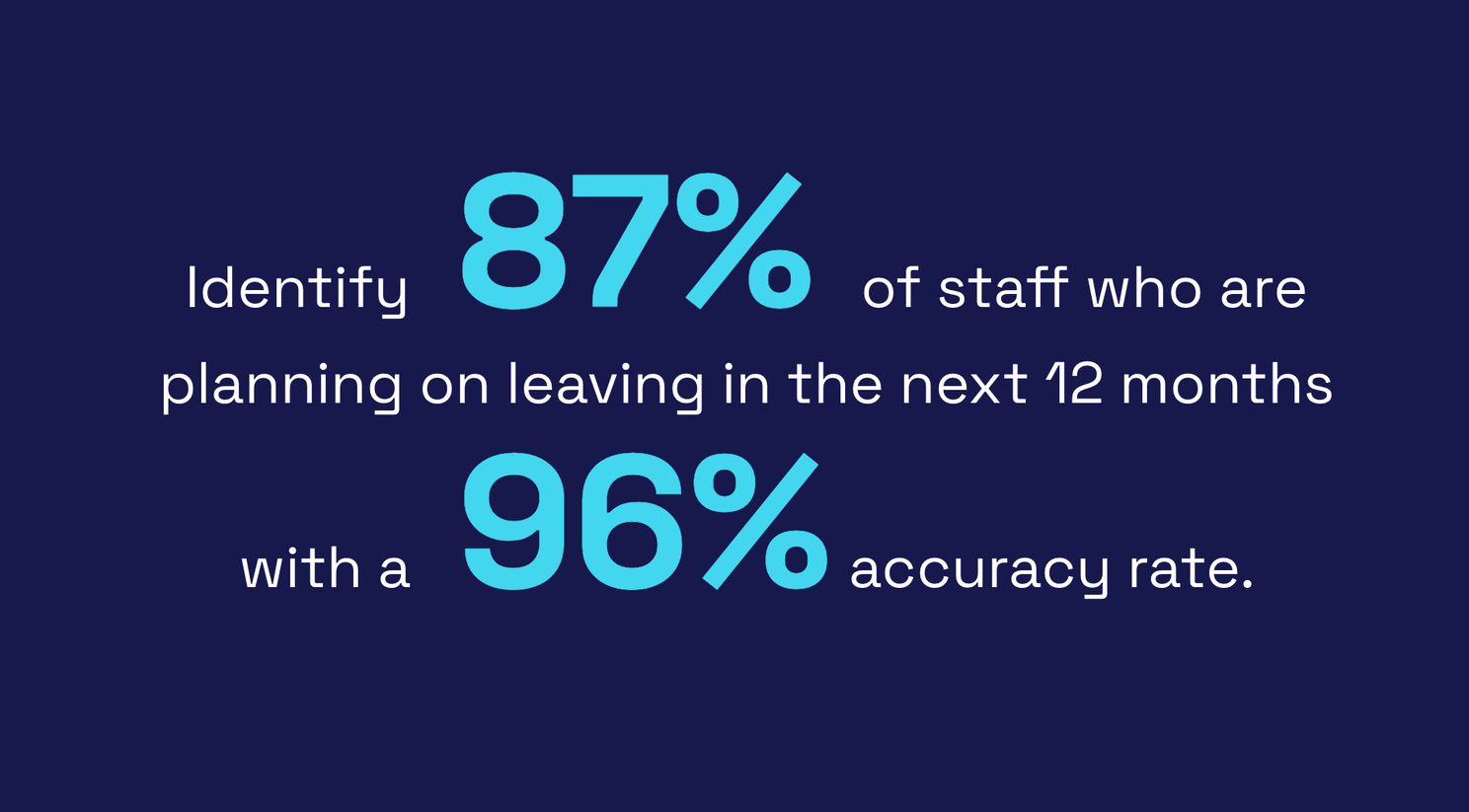
RetainTalent: ‘A great place to start’
Toustone’s Predictive People Analytics Tool, RetainTalent, is a primary example of how Predictive People Analytics is changing the landscape for HR decision-makers.
Lecturer Andrew Dhaenens from UNSW Business School mentioned RetainTalent as a go-to solution for businesses dealing with staff churn and retention challenges in the cover article ‘Automated Innovation’ featured by AHRM Magazine.
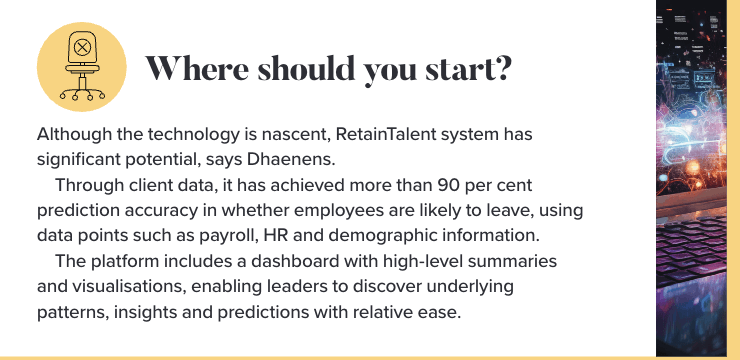
AHRI Automated Innovation. January 2024
Leveraging machine learning, RetainTalent, captures an organisation’s existing data sources and combines them with a machine learning model to develop accurate insights into labour trends, delivering the information they need to keep their staff.
Vanessa Porter said,
“Organisations that embrace this technology coupled with the right leadership are well-positioned to succeed in the rapidly evolving world of work.”
Toustone Data Scientist Yuan explains, “Leveraging machine learning, RetainTalent was able to identify 87% of staff planning to leave in the next 12 months with a 96% accuracy rate for a recent client. This can be done at an individual, team and organisation level.”
“RetainTalent picks out features greatly influencing the historical employee turnover rate, which builds a classification model with machine learning techniques to forecast employment status. The prediction runs periodically by RetainTalent, while the classification model is updated if necessary to maintain a high accuracy.”
The platform includes a dashboard with high-level summaries and visualisations, enabling leaders to discover underlying patterns, insights and predictions with relative ease.
“But now we’re going a step further. The next version is powered by more sophisticated machine learning algorithms and comprehensive pattern analyses to support the decrease of staff turnover rate and improve the employment environment,” Yuan said.
“The upcoming version of RetainTalent will include additional features for managers to record actions taken to prevent staff from leaving, further enhancing its utility by helping the model learn so it can keep providing an accurate result.”
If you’re a business leader experiencing staff churn and want a data-driven solution to help you understand who is at risk of leaving and why, RetainTalent has been mentioned as a ‘great place to start’.
Feel free to reach out to our data and people analytics team to find out how our machine learning experts and data scientists are ethically leveraging machine learning regarding staff retention with RetainTalent. We’d be happy to demonstrate how it can work for your business.
